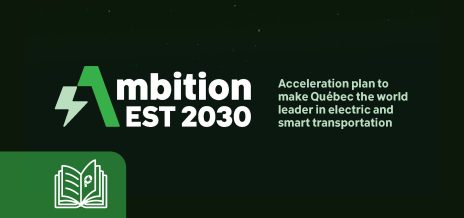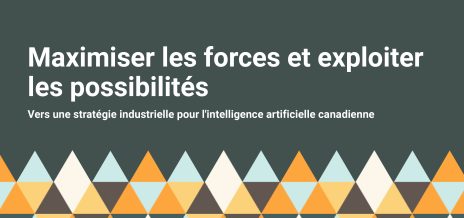Launch of Tangente IA, the intelligent mobility solution for the city of tomorrow, initiated by BusPas
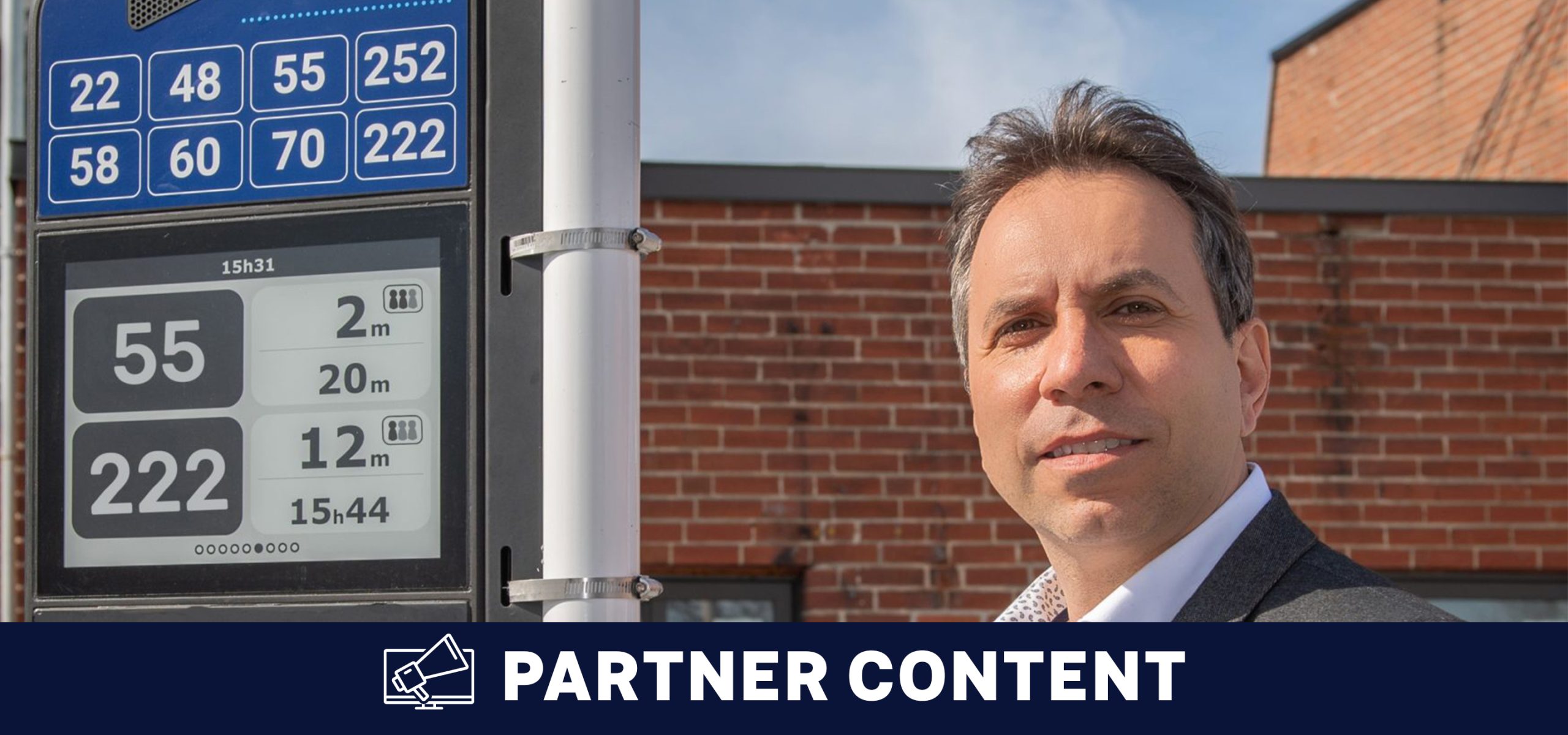
Data collected from Internet of Things (IoT) sensors allows entire cities to access key information and new data to effectively manage their resources and services more efficiently, doing so for the benefit of citizens. Quebec is already positioning itself as a pioneer in mobility and smart cities, namely through an innovative project in the field of public transport systems: Tangente IA. A project which the Quebec government committed, in October 2020, to provide $5.6 million in support.
Tangente IA connects solar-powered IoT devices to bus stops, gathering important data such as passenger numbers, waiting time, air pollution and the level of noise, among other factors. The solution provides real-time information to passengers regarding upcoming departures and other travel alternatives at every stop, not just at major junctions.
This first project of its kind in North America is being conducted by BusPas with the collaboration of several researchers from Quebec universities, including McGill, Concordia, Polytechnique Montreal, HEC Montreal, Université de Sherbrooke, Université du Québec à Montréal (UQAM) and Université du Québec à Trois-Rivières (UQTR). A successful industry-academic collaboration that lays a considerable foundation for the development of smart city connectivity with real-world pilot projects carried out in the near future.
Connecting Laval through its public transport
Discussions are underway to establish a partnership with the City of Laval and the Société de transport de Laval for a future pilot project at certain bus stops.
Through such pilot projects, BusPas will attempt to understand and provide solutions to different obstacles that transport agencies encounter. By perfectly understanding the diverse aspects linked to traffic flows, logistics and others factors that public transit faces on a city scale, BusPas will facilitate the deployment of its solution to other cities in North America and beyond.
Smart cities during a pandemic
Tangente IA’s technology can provide essential data for public transport during this pandemic. Indeed, the solution allows agencies to not only be able to detect traffic jams, major bus stops and the routes most frequented (and if these shift during a pandemic); but also, will provide information about bus capacity, making it possible to better control the commuter traffic on board.
The sensors put in place will therefore allow public transport systems to adapt to the situation during this period of pandemic, as well as readjusting to the post-pandemic recovery. The work will be greatly facilitated thanks to the data transmitted in real time by the sensors, effectively limiting trial and error. This will completely transform the customer experience of public transport.
Connecting entire cities via public transport
The first step instigated by Tangente IA sensors aims to connect thousands of IoT devices located at every point in the city into a preliminary and foundational network for any smart city. What was initially a dedicated network for the public transport system can then be reshaped to meet the different data needs of the city, thanks to an application programming interface embedded in each of the sensors and a business intelligence platform. For example, measuring ambient temperature and CO2 levels in the air allows for accurate mapping of heat islands and major pollution points.
As cities continue to implement smart initiatives, intelligent transportation is providing tangible and effective solutions to common mobility problems. These solutions will evolve based on the ability to capture and exploit the flow of data. ‘By taking all these great technologies that have become accessible and reliable and introducing them in very strategic places, Tangente IA is helping to improve the citizen experience and influence the way transportation companies operate around the world,’ Greg Vitetzakis, vice president of technology for BusPas.
Data protection
Tangente IA will comply with regulatory requirements on the respect of user data: data encryption, data storage for minimal periods and data anonymization.
This partner content was produced for Impulsion MTL 2020 – The International Fleet Management Forum.
Continue reading on this subject

Will industrial strategies chart a new course for the future of Quebec industries?
The Quebec economy—and more broadly the world economy—faces multiple challenges: the climate crisis, supply chain problems, labour shortages, inflation, etc. Quebec has an abundant supply of resources, know-how, and expertise; however, the next points on its agenda should include structuring, developing, and planning industrial activities.
Read more
Telematic Data: the Key to a Successful Energy Transition
Fleet managers are currently facing the colossal challenge of the energy transition, in order to meet legislative requirements and societal demands. For most carriers, both in the passenger transport sector and in the last mile delivery sector, this green shift has already begun.
Read more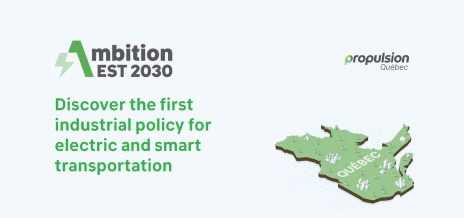
Ambition EST 2030 : a roadmap for propelling Quebec to the forefront of the electric and smart transportation industry by 2030
Propulsion Québec, the cluster for electric and smart transportation, is announcing Ambition EST 2030, a roadmap for the electric and smart transportation (EST) industry developed in partnership with Deloitte.
Read more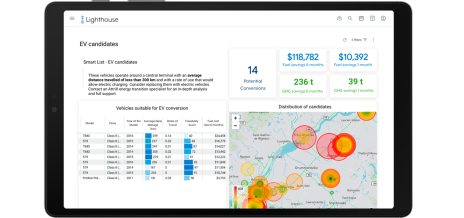
Energy transition, the challenge that is shaking up the trucking industry
The U.S. Department of Energy recently released a report containing a vehicle cost analysis for zero-emission medium and heavy-duty trucks.
Read more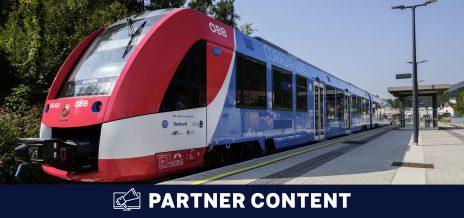
The Mobility of the Future is Smart, Green, Inclusive and Healthy
Innovation is part of our Alstom in Motion 2025 strategy. It has brought us to where we are today, and we want to go even further. With the new scale and combined expertise, Alstom has doubled its innovation capacity and we will support this growth by doubling the financial investments in R&D, up to 600 million euros (875 million Canadian dollars) per year by 2024.
Read more
Astus – Proud to support IMPULSION MTL 2021
With more than 25 years of expertise in the field of vehicle telematics, Astus is now a key player in the energy and digital transition of mobility and transport.
Read more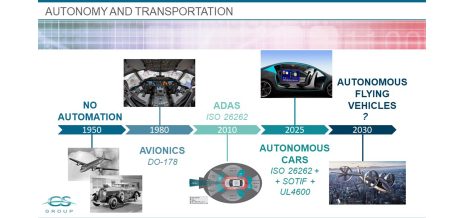
LiDAR and AI in autonomous vehicle commercialization and functional safety
The story of smart, autonomous transportation began nearly half a century ago. In the early 1980s, avionics systems started to replace more traditional mechanical and hydraulic systems through calculators and embedded software.
Read more
Is there a regulatory framework for location data?
Analysing location data can help service providers assess whether to boost services in one part of a city versus another, at a particular time of day or in preparation for an upcoming festival, for instance. However, the data used for these analyses is linked to individuals and makes it possible to identify them.
Read more
How to develop a successful strategy for your transition towards EVs
To this day, it is not uncommon to see a good number of companies relying on assumptions, sometimes non-global and inaccurate information reports in order to manage their vehicle fleet.
Read more
Five key Cybersecurity takeaways for the automotive industry
In our ever-changing connected world, digital transformation is affecting every aspect of our lives. The automotive industry is no exception to this evolution: our cars are becoming our best co-pilots, allowing us to plan our trips with real-time data or read and respond to text messages using voice command.
Read more